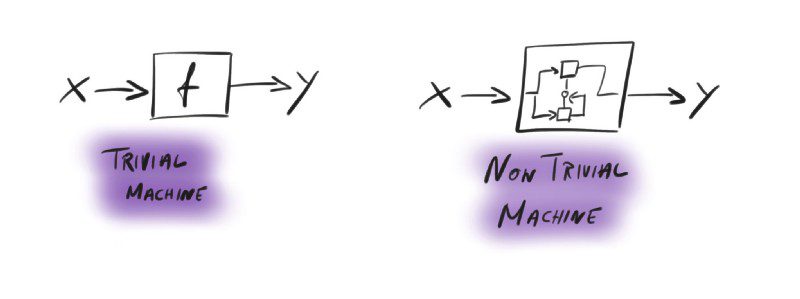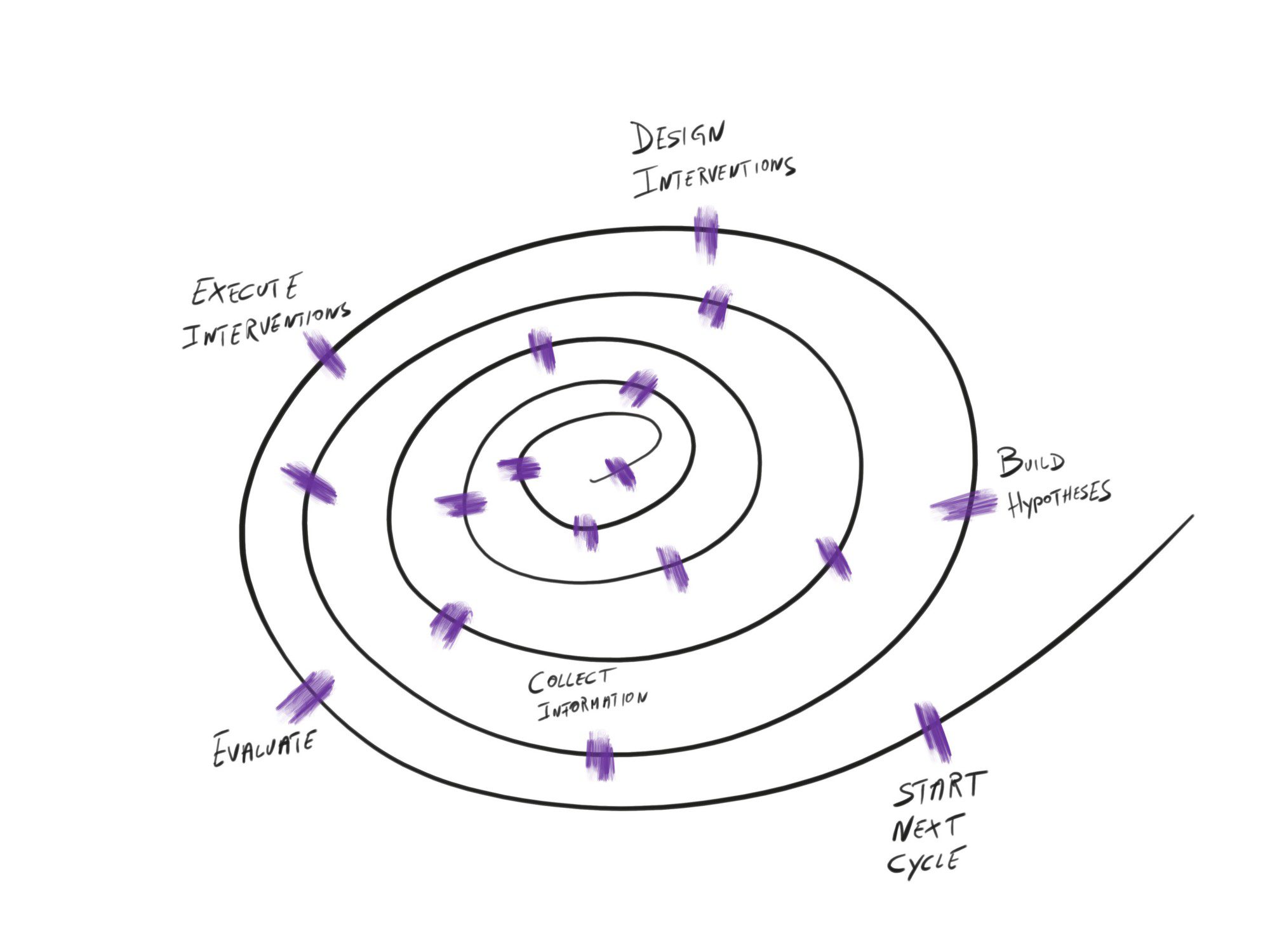This is how to lead change — the agile way
Organizational Change and Transformation are Unpredictable
Thursday, August 17, 2017
The Viennese School of Systems Thinking has a very long tradition (I’m talking 30+ years) of approaching organizational transformation and change management in a, what is called ‘agile’, ‘responsive’, or ‘lean’ today, fashion. (I’m referring to ‘agile, lean, and responsive’ here as concepts based on the principles of nonlinear, iterative processes, as compared to linear processes of ‘analysis — planning — implementation’.)
Based on the work of philosophers like Luhmann, Maturana, and Förster, the Viennese System Thinkers look at organizations as living social organisms and ask what the implications of such a view are for how to lead, manage, and change organizations.
The most important implication might be that you can’t predict with certainty how the system or living organism will react to your interventions and actions as a manager, employee, or consultant. Living organisms are a black box so to speak, and their reaction to inputs is to a large extent unpredictable. (Have a look at Heinz von Förster’s explanation of trivial and non-trivial machines for more on this or learn more about Complex Adaptive Systems.)

You may only make assumptions about what is needed and act accordingly to achieve the outcomes you hope for. The consequence is that you can’t plan a change initiative, or any other action for that matter, as a long term linear process. You need to engage in action, see what happens, and adapt your next move based on the outcomes achieved and the reaction of the organization.
This doesn’t mean though that you should act arbitrarily.
The Systemic Loop
The Viennese System Thinkers have a practice called “The Systemic Reflection Loop” to give such an agile and responsive approach to change, transformation, and management, structure.

Principles of the loop
The Reflection loop is based on the following principles (see Königwieser and Exner):
- Interventions are only impulses.
- The organization as a living organism will interpret and react to these impulses in its own way.
- Interventions should be based on hypotheses regarding the situation, the specific context, and the intended outcome.
- At the same time, one shouldn’t cherish the illusion that the intended outcome will occur.
This Systemic Loop can be applied to the macro, as well as the micro, level of leading change. On the macro level, it should be applied to reflect on the overall process and big picture. At the micro-level, it’s applied to daily activities and interventions.
An Agile and Responsive Approach to Organisational Transformation & Change Management
For change and organizational transformation, this means the following.
1. Gather Information
Before you engage in any activities, even start planning activities, gather insights on the current situation. Talk to people leading the change, as well as those impacted by it. Ask them about what they know about the change, how they feel about it, what’s on their mind regarding the change, what they expect next, etc.
Also, gather information about what changes are planned next, i.e., what’s the next milestone in an organizational restructuring project, or in the roll-out of a new process or IT system. Ask about who’s most impacted by the next milestone and how they have been prepared for it, if at all. Ask these impacted employees, how well prepared they feel.
Usually, we gather this information by means of interviews, focus groups, or online surveys.
2. Develop Hypotheses
Based on the information gathered you can start developing hypotheses about what is really going on, what is needed next, and what interventions might help to achieve the desired outcomes. Maybe people told you that they are unclear about what is expected of them. Maybe they have open questions that need to be answered. Maybe you get a feeling that they resist the change because they are unclear about next steps. Maybe you come to the conclusion that what is really needed is an intervention to create energy and trust in the initiative.
It is best to develop hypotheses in a team. Discuss perceptions, experiences, and what might make people act the way they do. Keep on asking why you think people said this or that during your interviews above.
3. Design & Implement Interventions
Your hypotheses should guide your next step. Think about what you’d like to achieve, what people need, and which interventions could be functional to achieve this outcome. Sometimes, especially when working with a larger group of people, e.g., a whole department or even a whole company, you might need to consider a series of various interventions.
Let’s assume for example that during a post-acquisition integration you surveyed all employees about how they feel about the current state of the integration, and which questions and concerns they have. You might launch a communication campaign to answer their questions. You might also need to engage with management to develop answers to questions, equip them with communication tools and materials, so they can provide answers, hold a series of meetings to give workers the possibility to discuss your answers, etc.
When designing interventions, think about:
- Content of the intervention, e.g., specific answers to give, objectives to achieve, topics to work on
- Timing of the intervention, e.g., when it the best time to communicate something, work on something, what is the sequence of interventions, how long is each of them
- Social dimension of the interventions, i.e., who needs to be involved, informed first, do you inform in 1:1 sessions, focus groups, department meetings, or the whole company at once, face to face, virtual, or via email
- Spatial dimension, e.g., when it comes to meetings, where will you hold it, how is the seating arrangement (e.g., boardroom, only chairs, no tables, chairs in a circle,…)
Jason Little, author of “Lean Change Management” adds an interesting perspective to designing interventions. He suggests developing options and run experiments of interventions to see what yields the best result. I’m pondering the idea, although I would probably not recommend it in every case, as a failed experiment could potentially harm your stakeholders’ perception of and feelings towards the change considerably and do more harm than good.
4. Evaluate
To close the loop, you need to evaluate the outcomes of your interventions and ask yourself, whether you’ve reached your objectives and, again, what is needed next. This evaluation is similar to the gathering of information in the first step. The information gathered serves again as the basis for formulating hypotheses about what the current situation is and what interventions are needed next. You might not have achieved the desired outcome and might need to try a different approach.
Following the above example, you might conduct another survey after 1–3 months of having implemented your interventions. Or you might have a sense that you did not reach your objectives right after having conducted a workshop, and need to take the next step immediately.
The most important thing is to stay close to the people involved in the change, and don’t automatically assume your interventions were successful and had the intended effect only because you implemented them as planned.
As mentioned above, the principles of how this particular school of systems thinking approaches change and leadership, are very similar to those en-vogue today in design thinking, agile, lean, etc. Only these system thinkers have been around since the late 1980s.
Recently I’ve also been made aware of other schools of thinking, like the OODA loop for example, which were invented around the same time, and are built on similar principles.
Bottom line:
- Think before you act. Observe, collect information, and oriented yourself based on hypotheses about what is going on and what is required.
- Design interventions with purpose, build on these hypotheses.
- Don’t assume that because you acted, you achieved the intended result.
- Learn from outcomes achieved to refine your hypotheses and repeat the cycle.
The Agile Transformation Loop
Further references
- Systemic Consultancy in Organisations: Concepts, Tools, Innovations
- Managing Cuts and New Growth: An innovative approach to change management
- Systemische Intervention
- More on the Systemic Approach to Consulting on Wikipedia (in German)


